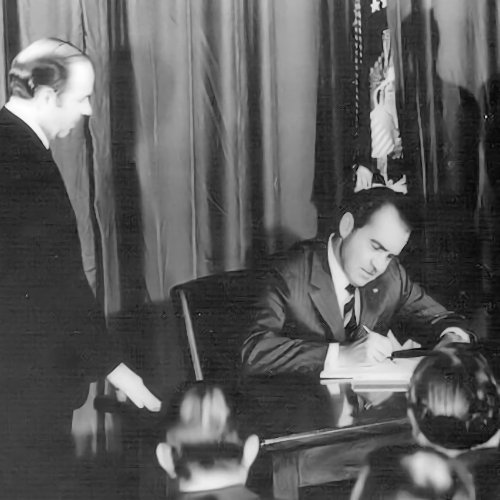Statistics When OSHA Was Created
Although precise statistics were not kept at the time, it is estimated that around 14,000 workers were killed on the job in 1970, or 38 per day. Many thought that the only solution to was to create a Federal law with the same rules and enforcement for everyone.
Nixon Enacts Law
On December 29, 1970, President Nixon signed the OSH Act which formally came into being on April 28, 1971.
With the creation of OSHA, for the first time, all employers in the United States had the legal responsibility to provide a safe and healthful workplace for employees. And, there were now uniform regulations that applied to all workplaces.
The OSH Act is also known as Public Law 91-596. It covers all private sector employers and their workers in the 50 states and all territories and jurisdictions under federal authority.
Private Sector Workers — OSHA covers most private sector employers and workers in all 50 states, the District of Columbia, and other U.S. jurisdictions either directly through Federal OSHA or through an OSHA-approved state plan. State-run health and safety programs must be at least as effective as the Federal OSHA program. They may be more restrictive than the Federal Program.
State and Local Government Workers — Workers at state and local government agencies are not covered by Federal OSHA, but have OSH Act protections if they work in one of the states or territories that have an OSHA-approved state program.
Federal Government Workers — OSHA's protection applies to all federal agencies. Federal agencies must have a safety and health program that meet the same standards as private employers. Although OSHA does not fine federal agencies, it does monitor these agencies and conducts federal workplace inspections in response to workers' complaints.
Employers and workers in many fields, including but not limited to manufacturing, construction, longshoring, agriculture, law, medicine, charity and disaster relief are covered by OSHA.
Religious groups are covered if they employ workers for secular purposes, such as maintenance or gardening.
Knowledge Check Choose the best answer for the question.
1-3. State-run OSHA health and safety programs _____ the Federal OSHA program.
You forgot to answer the question!

